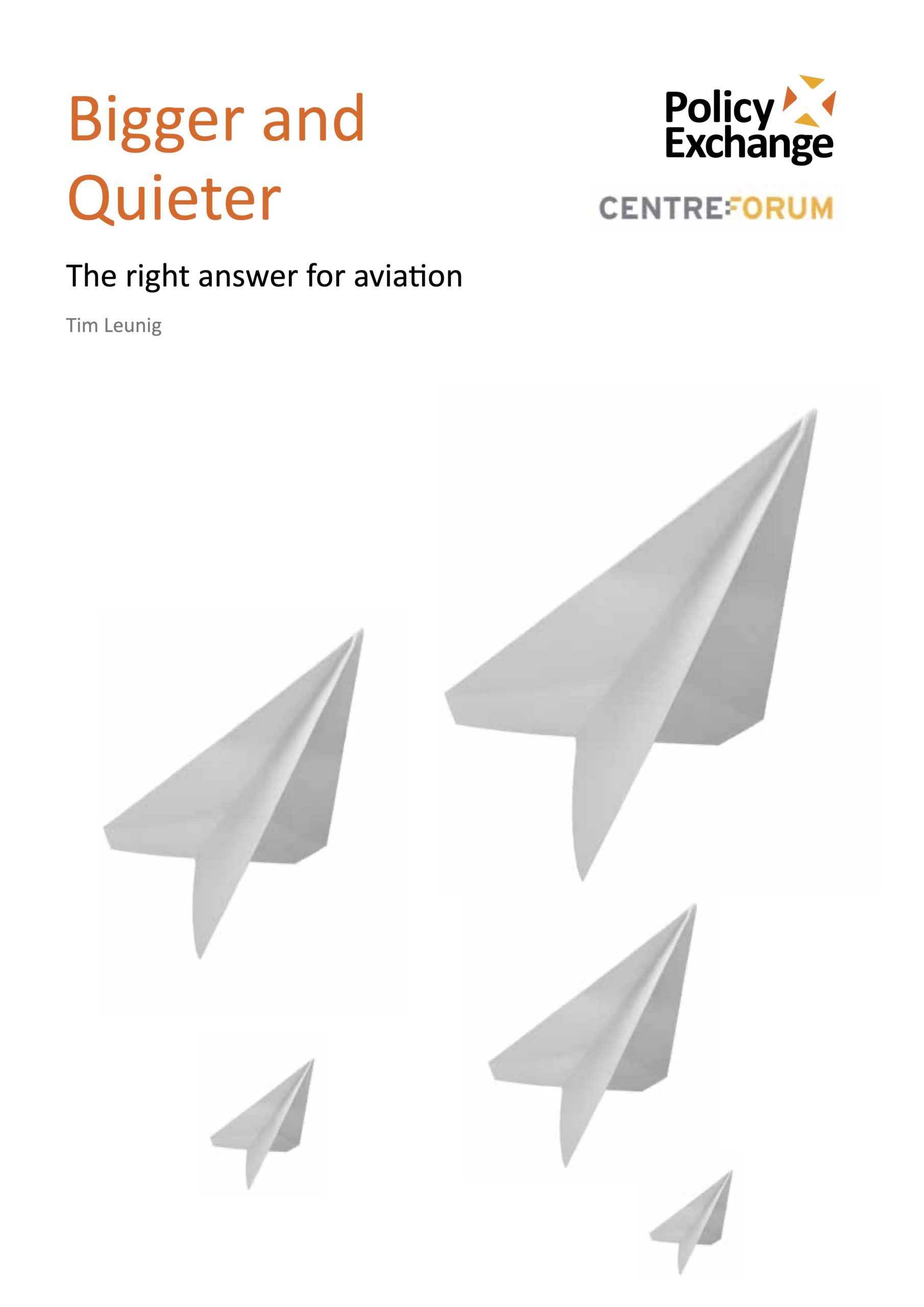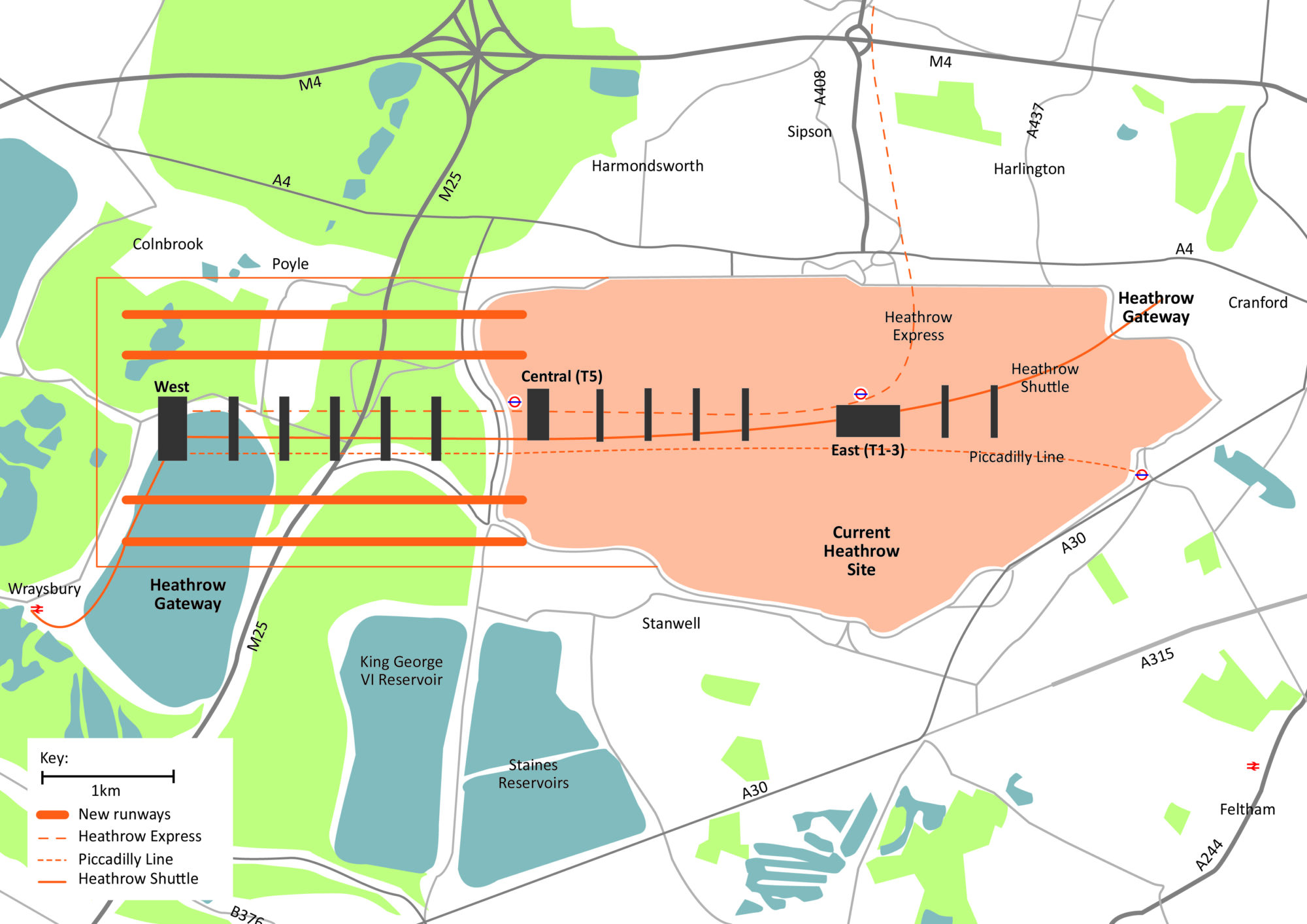
Bigger and Quieter: The right answer for aviation
This report is the winner of Prospect Magazine’s Think Tank Economics Paper of the Year 2013. It has received the backing of The Economist, the Financial Times and the Transport Select Committee and is being considered by the Davies Commission on UK airport capacity.
Bigger and Quieter: The right answer for aviation examines all of the options for increasing airport capacity in the UK. It supports placing four runways immediately west of the current Heathrow site. This would double the existing capacity to 130 million passengers, cementing it as Europe’s premier hub. If this was politically unfeasible, then a four runway airport at Luton would be the next best option.
The report says that the UK needs a new hub airport located in the South East which has spare capacity to accommodate the likely increase in demand, especially to cope with the rise in middle class travellers from emerging markets.
It doesn’t rule out the current proposal to build a third runway to the north of Heathrow, but claims that less people would be affected by aircraft noise if the four runways were instead located 3km to the west of Heathrow.
Proposed expanded Heathrow site

To reduce the effect of noise the report proposes:
- A complete ban on the noisiest aircraft at all times, rather than just at night. Airlines would have to ensure their fleet complied with new decibel measures by the time the new runways were ready for use
- Imposing a complete ban on night flights. The increase in the number of slots available would mean no planes would arrive or depart between 11pm and 6:15am
- Landing narrow bodied planes at a steeper angle as they already do at London City airport. This again means they are higher over any part of West London on their descent. For example, a plane would be 925m rather than 260m above Hounslow
- In addition, moving the airport west means planes will be higher over London than at present
Because the proposal reuses existing terminals and infrastructure, the price is likely to be around half that of Foster’s proposal for an estuary airport. Approximately 700 properties would need to be demolished compared to the 1,400 that would need to go to make way for the estuary airport. The cost and ease of travel to Heathrow as well as the fact many businesses are already located near the current airport makes it the most suitable site.
The report says that other than Heathrow, Luton is the best located London airport. It is close to a high quality, four track rail line that goes to London St Pancras in 21 minutes as well as to key cities in the Midlands. It is also close to the M1, arguably Britain’s most important road. If expanding Heathrow is politically unfeasible, Leunig proposes a four runway Luton Hub with two terminals, the first adjoining the M1, the second the Midland Main Line rail route. The disadvantage of Luton over Heathrow is that the terrain is much more challenging, and the location is not as strong.
The paper rules out:
- Foster + Partners estuary airport (aka “Boris Island”) as it is too hard to get to for too many people. The environmental and construction challenges are also much harder to overcome than at Heathrow
- Connecting Heathrow and Gatwick to become a single hub. The two airports are 25 miles apart meaning that a direct high speed rail link would cost approximately £15 billion
- A four runway airport at Gatwick. The costs are higher than for Heathrow, and the location is not as good. Instead Gatwick should consolidate its position as a good quality base for point to point traffic geared towards leisure travel and short haul flights
- A four runway airport at Stansted. Like the estuary airport proposal, Stansted suffers from a poor location, with a weak hinterland and slow connections to London and the rest of the country
Impact
On 17th June 2013, Heathrow released their submission to the Airports Commission, highlighting the impact that Policy Exchange’s report,Bigger and Quieter, had had on their thinking:
On 25th June 2013, Policy Exchange was delighted to see Bigger and Quieter receive Prospect Magazine’s Think Tank Economics Publication of the Year award. On 1st February 2013, Sir Howard Davies, Chairman of the Airports Commission, confirmed that Bigger and Quieter would be among the proposals considered by the commission. This report has received backing in the media from The Financial Times and The Economist, the latter dedicating their front cover, a leader and an article to the report and the greater Heathrow capacity issue. Proposals from the report have also been endorsed by the Treasury Select Committee. |

